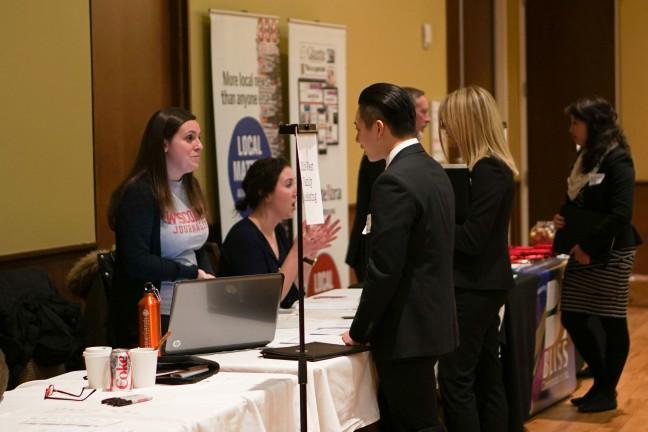With multi-million dollar bowl games and bidding wars for top men’s football and basketball coaches, it’s no secret some college sports earn big money.
An analysis of seven Big Ten schools’ Equity in Athletic Disclosure Act report shows that men’s intercollegiate football, basketball and ice hockey are the only profitable sports across the board. The seventeen other intercollegiate sports at the University of Wisconsin collectively lost $9 million in 2002, or about $313 per undergraduate.
At the UW in 2002, earnings were $528,000 for each basketball player, $128,000 for each football player, and $77,000 for each hockey player.
In a “devil made me do it” tone, university administrators are quick to recite the requirements of Title IX and NCAA regulations as justification for the UW sports policies. Title IX requires that the total amount of athletic aid be equally distributed among men’s and women’s sports.
The NCAA does not allow colleges to offer only those sports that are profitable and sets many of the rules for scholarships. UW Deputy Athletic Director Jamie Pollard said for UW to participate in Division I athletics and the Big Ten Conference, it must offer a certain number of varsity sports.
So who benefits from educational opportunities while participating in money-losing sports? It’s not principally minority athletes. They generally pay for their own educational opportunities through sports that make money for the university.
While African-Americans and Hispanics are about 25 percent of the U.S. population, NCAA statistics show they represent a disproportionately large share of football (46 percent), and basketball (60 percent) players nationwide.
African-American and Hispanic efforts on the football field and basketball court are key to the big money college athletic departments rake in. With the exception of women’s basketball and college track, African-Americans and Hispanics are greatly underrepresented in the collegiate money-losing sports.
The University of Illinois’ Ethnicity Report shows that in sports other than football and basketball, at least 88 percent of the players are “non-black or Hispanic,” and many teams have no African-Americans at all. That’s not surprising, for a disproportionate number of black athletes probably come from schools that did not offer much beyond basketball, track and football. Many inner-city schools can only dream of offering crew or fencing.
A comparison of two high schools, one a wealthy suburban school and the other an inner-city school, bears this out. New Trier High School, a predominantly white, wealthy suburban school outside Chicago, boasted 205 athletic coaches in the 2003-2004 school year, according to the New Trier webpage. In addition to football, track and basketball, New Trier offers soccer, golf, cross country, water polo, lacrosse, bowling, field hockey, volleyball, tennis, swimming, baseball, softball, badminton, wrestling, gymnastics and co-ed fencing.
At North Division High School in Milwaukee, Wis., the only minor sports offered are girls’ tennis and wrestling.
New Trier has eight coaches for golf alone: five for boys, three for girls. Peter Drevline, the New Trier freshmen and sophomore boys’ golf coach, said some of the students he coaches have been playing golf since they were five years old. Drevline also said many New Trier students participate in golf summer programs and some receive university scholarships. That’s consistent with a recent Chicago Tribune report that some affluent Chicago-area parents are hiring personal trainers for their pre-teens aiming at getting college scholarships.
It’s easy to figure out who gets most of the educational opportunities found in intercollegiate money-losing sports. Isn’t it ironic that the money for these scholarships is largely provided through the efforts of teams disproportionately made up of minority athletes? Are the UW’s athletic scholarship policies in tune with its diversity goals?
Aiding athletes whose sports make big money for the school is understandable. The players earn the money for their scholarships and then some. That can’t be said of athletes in money-losing sports. Perhaps scholarships for these sports should be entirely based on financial need.
Cynthia Martens ([email protected]) is a junior majoring in Italian and European Studies.







